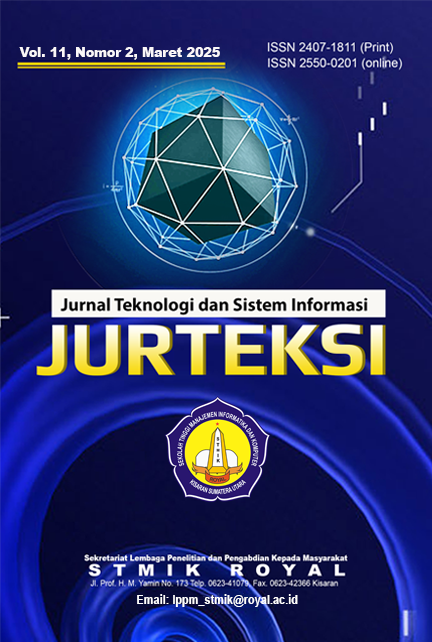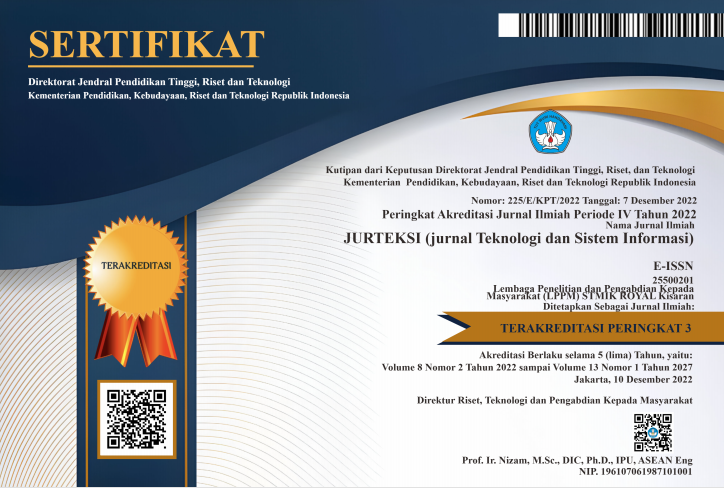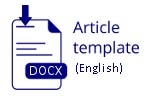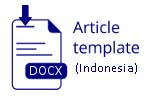OPTIMIZATION OF K-MEANS AND K-MEDOIDS CLUSTERING USING DBI SILHOUETTE ELBOW ON STUDENT DATA
Abstract
Abstract: Clustering methods such as K-Means and K-Medoids are often used to analyze data, including student data, due to their efficiency. However, this method has weaknesses, such as sensitivity to selecting cluster centers (centroids) and cluster results that depend on medoid data. Clustering, an essential technique in data analysis, aims to reveal the natural structure of the data, even in the absence of labeled information. The study, conducted with complete objectivity, compared the performance of two popular clustering methods, K-Means, and K-Medoids, on student data. Three evaluation metrics, namely the Davies-Bouldin Index (DBI), silhouette score, and elbow method, were used to compare clustering and determine the ideal number of clusters for the two algorithms. The data taken in this study are in the form of names, attendance, assignments, formative, midterm exams, final exams, and quality numbers. Based on the existing optimization results, it can be concluded that the K-Means method excels in grouping Student Data. The best results were obtained from the K-Means Algorithm with the Silhouette Coefficient Method with a value of 0.7509 in cluster 2, and the Elbow Method with a value of 1428076.08 in cluster 2, DBI K-Medoids with a value of 0.7413 in cluster 3. So, the best cluster lies in 3 clusters.
Keywords: clustering; davies-bouldin indek; elbow method; k-means; k-medoids; silhouette score;
Abstrak : Metode clustering seperti K-Means dan K-Medoids sering digunakan untuk menganalisis data, termasuk data siswa, karena efisiensinya. Namun, metode ini memiliki kelemahan, seperti sensitivitas terhadap pemilihan pusat klaster (centroids) dan hasil klaster yang bergantung pada data medoid. Clustering, sebuah teknik penting dalam analisis data, bertujuan untuk mengungkapkan struktur alami dari data, bahkan tanpa adanya informasi berlabel. Penelitian ini, yang dilakukan dengan objektivitas penuh, membandingkan kinerja dua metode clustering populer, yaitu K-Means dan K-Medoids, pada data mahasiswa. Tiga metrik evaluasi, yaitu Davies-Bouldin Index (D.B.I.), silhouette score, dan metode elbow, digunakan untuk membandingkan clustering dan menentukan jumlah cluster yang ideal untuk kedua algoritma tersebut. data yang diambil dalam penelitian ini berupa nama, kehadiran, tugas, formatif, ujian tengah semester, ujian akhir semester, angka mutu. Berdasarkan hasil optimasi yang ada, dapat disimpulkan bahwasannya metode K-Means unggul dalam pengelompokkan Data Mahasiswa. Sehingga di peroleh hasil terbaik dari Algoritma K-Means dengan Metode Silhouette Coefficient dengan nilai 0,7509 di cluster 2, dan Elbow Method dengan nilai 1428076,08 di cluster 2, DBI K-Medoids dengan nilai 0,7413 di cluster 3. Sehingga cluster terbaik terletak pada 3 cluster.
Kata kunci: klasterisasi; davies-bouldin indek; elbow method; k-means; k-medoids; silhouette score;
References
N. Majeed and S. Ali, "Application of clustering in higher education for student performance analysis," Journal of Educational Data Mining, vol. 14, no. 1, pp. 24-35, 2022.
J. Clerk Maxwell, A Treatise on Electricity and Magnetism, 3rd ed., vol. 2. Oxford: Clarendon, 1892, pp. 68-73.
G. Eason, B. Noble, and IN Sneddon, "On certain integrals of Lipschitz-Hankel type involving products of Bessel functions," Phil. Trans. Roy. Soc. London, vol. A247, pp. 529-551, Apr. 1955.
IS Jacobs and CP Bean, "Fine parti-cles, thin films and exchange anisot-ropy," in Magnetism, vol. III, GT Ra-do and H. Suhl, Eds. New York: Ac-ademic, 1963, pp. 271-350.
Y. Yorozu, M. Hirano, K. Oka, and Y. Tagawa, "Electron spectroscopy studies on magneto-optical media and plastic substrate interface," IEEE Transl. J. Magn. Japan, vol. 2, pp. 740-741, Aug. 1987 [Digests 9th An-nual Conf. Magnetics Japan, p. 301, 1982].
T. Hastie, R. Tibshirani, and J. Friedman, The Elements of Statistical Learning: Data Mining, Inference, and Prediction, 2nd ed. New York: Springer, 2019.
M. Singh, R. Pandey, and R. Dubey, "Clustering in educational data min-ing: A review," International Journal of Engineering Research & Technol-ogy (IJERT), vol. 9, no. 5, pp. 33-39, 2020.
A. Kumar and P. Goyal, "Analysis of clustering techniques: K-means and K-medoids," Journal of Computer Science and Applications, vol. 8, no. 2, pp. 45-50, 2018.
M. Singh, R. Pandey, and R. Dubey, "Clustering in educational data min-ing: A review," International Journal of Engineering Research & Technol-ogy (IJERT), vol. 9, no. 5, pp. 33-39, 2020.
N. Majeed and S. Ali, "Applica-tion of clustering in higher education for student performance analysis," Journal of Educational Data Mining, vol. 14, no. 1, pp. 24-35, 2022.
S. Pratama and W. Pardede, "Comparative analysis of K-Means and K-Medoids in clustering educa-tion data," Procedia Computer Sci-ence, vol. 172, pp. 367-374, 2020.
P. Tan, M. Steinbach, and V. Kumar, Introduction to Data Mining, 2nd ed. Boston: Pearson, 2019.
J. Han, M. Kamber, and J. Pei, Data Mining: Concepts and Tech-niques, 3rd ed. San Francisco, CA: Morgan Kaufmann, 2012.
R. Aggarwal and R. Agrawal, "Data clustering: A review," Interna-tional Journal of Data Science and Analytics, vol. 6, no. 1, pp. 37-56, 2018.
R. Davies and D. Bouldin, "A cluster separation measure," IEEE Transactions on Pattern Analysis and Machine Intelligence, vol. PAMI-1, no. 2, pp. 224-227, 2019.
J. Rousseeuw, "Silhouettes: A graphical aid to the interpretation and validation of cluster analysis," Journal of Computational and Applied Mathematics, vol. 20, pp. 53-65, 2020.
R. Ali and S. Ali, "Evaluating clustering methods with Silhouette and Elbow approaches," International Journal of Advanced Computer Sci-ence and Applications, vol. 12, no. 4, pp. 159-166, 2021.
S. Syakur, F. Khotimah, E. Rochman, and B. Satoto, "Determin-ing the number of clusters in K-Means and K-Medoids clustering us-ing the elbow method," Journal of Physics: Conference Series, vol. 1028, no. 1, p. 012075, 2018.
D. Liu and Y. Wang, "Optimizing clustering algorithms using hybrid approaches," IEEE Access, vol. 10, pp. 8754-8765, 2021.
A. Ng, "Machine learning and data clustering in educational re-search," Machine Learning Journal, vol. 16, pp. 132-141, 2019.
K. Pearson, "Principles of clustering and dimensional reduction," Journal of Computational Analysis, vol. 5, pp. 12-23, 2018.













